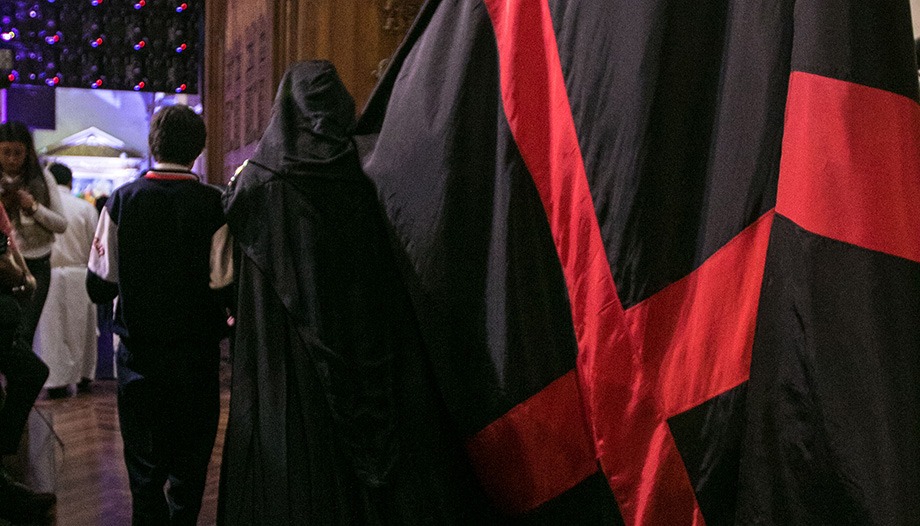There are numerous customs that, in Ecuador, accompany the experience of the Lenten season and Holy Week. In them, faith and culture are intertwined, giving rise to traditions of great beauty and symbolism. Among them, we highlight in this article three: the traditional soup "Fanesca", the procession of Jesus del Gran Poder and Arrastre de Caudas.
Fanesca
Fanesca is a traditional food dish that is usually prepared for all of Lent, especially for the Friday days of abstinence, since it does not contain meat. This soup is prepared with dried cod and 12 different grains. It is said that the fish represents Jesus and the 12 grains represent the disciples.
The purest tradition is to eat Fanesca on Holy Thursday. However, it is known that the dish is prepared nationwide and that is why it is available all Holy Week in several restaurants.
It is usually served hot on a plate and it is traditional to decorate it with pieces of cod, either cooked or fried, salt dough in the form of empanadas, threads or balls. Also fried ripe plantain, red chilies, parsley leaves, fresh cheese, a piece of white onion and slices of boiled egg.
Procession of Jesus del Gran Poder
The procession of Jesus of the Great Power is quite old. Every year about 250,000 thousand people take to the streets of downtown Quito, and especially concentrate in the Plaza San Francisco. The procession lasts until three in the afternoon, time of death of the Lord. The descent takes place at six o'clock in the afternoon, when the day ends for the Jewish community.
The Cucuruchos, along with the Veronicas, are traditional characters that accompany Jesus del Gran Poder and the Virgen Dolorosa in this tour that begins and ends in San Francisco and runs through much of the historic center of Quito, the largest colonial center of South America. The whole city and the streets are dyed purple.
The Cucuruchos symbolize the penitents who show their repentance and their will to change and want to vindicate themselves and begin a life free of sins. The Veronicas are the representation of the brave woman who made her way through him, to wipe the sweat and blood from the face of Jesus with a cloth that would have been miraculously engraved on the cloth by the Santa Faz.
The Cauda Dragging
Every Holy Wednesday in the cathedral of Quito the Arrastre de Caudas is performed, also known as the "Paso de la Reseña" is of Roman origin from the sixteenth century, it is done in the Cathedral.
The ceremony takes place inside the cathedral when the Archbishop of Quito, together with his eight canons, performs a procession in which they carry on their backs the caudas, which are heavy black cloaks almost two meters long, symbolizing the sins of the world.
The canons prostrate themselves in front of the main altar for the Archbishop to wave a huge black flag with a red cross above them to symbolically convey the virtues of Jesus Christ. The flag also passes over the heads of many of the attendees. To conclude the liturgical act, the Archbishop hits the flag three times against the ground, symbol of the resurrection of Christ, and then blesses all the faithful with the relic of the Holy Cross.
José Asimbaya, parish priest in charge of the Caudas Cathedral cArrastre, points out that "it is a celebration full of hope, of life. Although the rites that are performed speak of death because of this convulsed world, full of violence, there is hope to live. That is why the flag that is waved is to show that death has been defeated.











